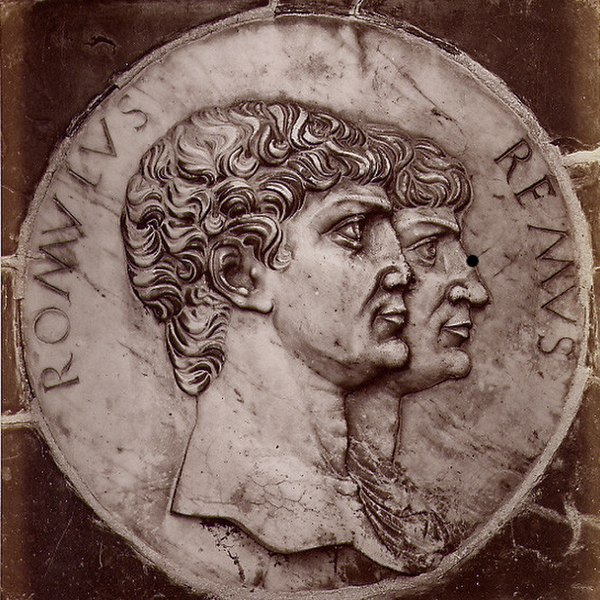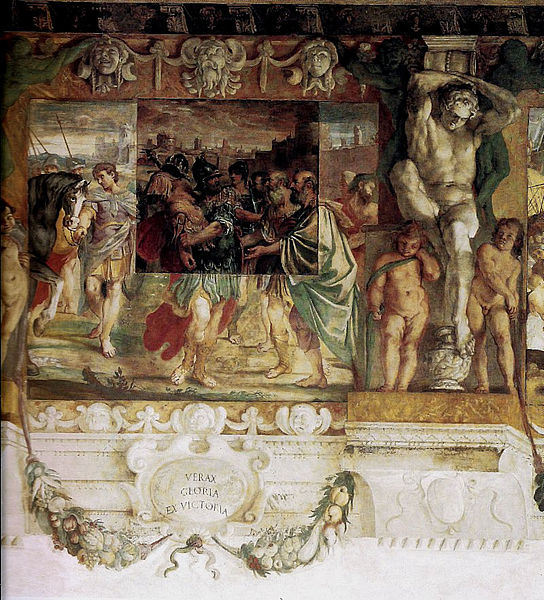In Roman mythology, Faustulus was the shepherd who found the infant Romulus and his twin brother Remus along the banks of the Tiber River as they were being suckled by the she-wolf, Lupa. According to legend, Faustulus carried the babies back to his sheepfold for his wife Acca Larentia to nurse them. Faustulus and Acca Larentia then raised the boys as their own. Romulus later defeated and killed King Amulius of Alba Longa, with the help of Faustulus, and his brother Pleistinus. Romulus and Remus set out to build their own city, but then had a falling out. In the ensuing skirmish, Faustulus and Pleistinus were killed. Romulus went on to found Rome
The Font de Mussa Mosaic. A 1st or 2nd century Roman mosaic depicting Faustulus wielding a crook. Found in Benifaió (Valencia, Spain) and currently held in the Museum of Prehistory of Valencia.
Painted in 1654 by French artist, Nicolas Mignard, this example of late 17th century French art depicts Faustulus presenting the infants Romulus and Remus to his wife (their adoptive mother), Acca Larentia. This work is housed in the Dallas Museum of Art.
This 1597 work by Pietro de Cortona depicts the presentation of Romulus and Remus to his wife, Acca Larentia. This work is housed in the Denon wing of the Louvre.
Romulus and Remus by Peter Paul Rubens, 1615. One can view Faustulus (right) approaching the infants Romulus and Remus as they are suckling at the teat of the she-wolf. Housed in the Pinacoteca Capitolina in Rome.
Romulus was the legendary founder and first king of Rome. Various traditions attribute the establishment of many of Rome's oldest legal, political, religious, and social institutions to Romulus and his contemporaries. Although many of these traditions incorporate elements of folklore, and it is not clear to what extent a historical figure underlies the mythical Romulus, the events and institutions ascribed to him were central to the myths surrounding Rome's origins and cultural traditions.
Romulus and his twin brother Remus from a 15th-century frieze, Certosa di Pavia
A statue of a She-wolf depicts the twins suckling.
Roman Denarius with Romulus as Quirinus
Romulus dedicating the temple to Jupiter Feretrius








